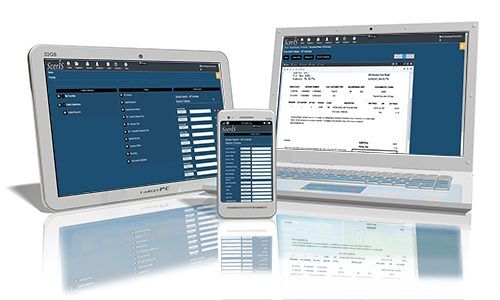Revolutionize Your Operations with ETCETERA®
Revolutionize Your Operations
with ETCETERA®
One Platform, Endless Possibilities
Discover a world of streamlined business processes with the ETCETERA® Platform. Our comprehensive solution allows you to tailor applications, manage a plethora of document classes, and redefine your online business processes. Explore how ETCETERA® can be the catalyst for transformative change in your organization, driving enhanced efficiency, and unrivaled user satisfaction.
Solution Examples
ScerIS customers rely on our vertical expertise and the ETCETERA® platform to deliver greater business process controls and efficiencies hosted on-premises or in the ScerIS cloud.
Our passion for innovation and technical discovery drives us to help customers imagine the possibilities and endeavor to optimize their business' efficiencies.
By Department
While there are similarities in the requirements of departments across industries, many differences remain with departmental requirements unique to each industry, and unique to the core ERP, EHR or other application used by the customer. Without exception, ScerIS systems and services accommodate that uniqueness.
ETCETERA® Example Uses
& Applications
The ETCETERA® Platform leverages the synergy between its two primary modules — ETCETERA® Enterprise Content Management (ECM) and ETCETERA® Enterprise Process Management (EPM) — to transform and optimize internal processes across nearly any department in any industry. From accounting and human resources to healthcare and manufacturing, the ETCETERA® Platform ensures seamless management and regulatory compliance.
Discover how the ETCETERA® Platform can streamline operations, enhance efficiency, and support your organization’s unique needs. Explore specific use cases, departmental applications, and industry-specific solutions that demonstrate the versatility and effectiveness of ETCETERA® EPM & ECM by using the button below.
Unlimited Everything with ETCETERA®
Unlimited Everything
with ETCETERA®
Get more accomplished with less cost, less effort and faster. Deploy solutions when they're needed, not at the end of budget or capital cycles with their inevitable delays. Simple Concurrent User Licensing or Concurrent User Subscription gets you:
✓ Unlimited Named Users
✓ Unlimited Applications
✓ Unlimited Documents
✓ Unlimited Transactions
✓ Unlimited Work Queues
✓ Unlimited Indexing
✓ Unlimited Dashboards
✓ Unlimited Data Sources
✓ Unlimited Retrievals
✓ Unlimited Reports
✓ Unlimited Workflows
✓ Unlimited Uses
Setting Up User Permissions
User security and permissions for the ETCETERA® Platform are managed in Authorization Services (AUTH). Our AUTH architecture provides a very granular authorization security schema where security definitions are comprised of Objects, Access Conditions, Resources, Actions, Permissions, Groups, and Users. AUTH is integrated to Active Directories for Single Sign-On and also provides for Named Users. ETC® software products sense Windows authentication in permitting access to applications and in determining other user specific privileges.
Software Licensing
ETCETERA® is available in a Product License, Subscription and Software as a Service (SaaS).
When selecting ETC® modules you have a number of pricing alternatives available. Typically, the selection of one alternative over another is about reducing up-front costs, lowering your total cost of ownership, increasing your total value of ownership, maximizing cash flow, exercising maximum control of applications implemented, integration with existing ERP and other core systems, integration with Active Directory or minimizing IT involvement.
ETCETERA® Platform White Paper
IT and Senior Leadership want integrated solutions
Businesses can no longer accept increasing costs & limitations of disparate technology silos
Organizations can configure unlimited solutions
Reduce infrastructure, support and costs
ROI is achieved in weeks or months







